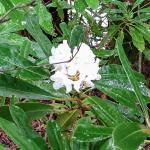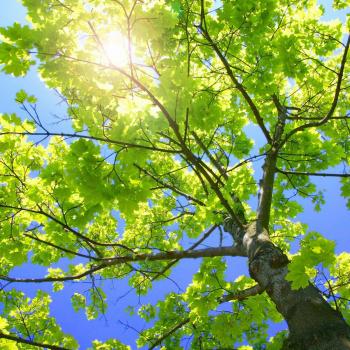Lent is another word for Spring. I was surprised to learn this fact. Somehow, I got the idea it meant “fasting” or something similar. No one asks me, “What are you giving up for Spring?” It does not make much sense. But if someone asked what I was doing for Spring, I have several answers. It makes me ponder how Lent as an observance factors into these other tasks.
Lent And Gardeners
Where I live, we plant beans on Good Friday. Corn and squash planting is done close to that same time. But beans are for Good Friday or Holy Week because the risk of frost is mostly past us. The plants would die from the cold. It is also the time of rain which is important for the plants.
Potatoes should be planted around Ash Wednesday. The weather is cooler making the work involved easier. The first leaves will come up later in Lent when it is time to pull dirt over them thereby “hilling” the potatoes. This practice allows for more growth.
Greens, beets, onions, cabbages, and lettuces should be planted after the potatoes. The cooler weather allows these plants to grow more slowly gathering more nutrients and flavor. Plant enough to share with rabbits and other animals you cannot outwit.
These are vegetable crops. Spring flowers are planted during Autumn. Summer and Autumn flowers are planted during Lent.
Spring Life
I also associate Lent with Little League Baseball. My practice as a parent was to help children (mostly boys but some girls) learn to throw and hit a small off-white ball. Later, I helped other parents learn how to teach these skills. I tell them about hand and eye coordination and quick decision making. Literally, we teach the children to think on their feet.
Lent is about spiritual preparation or exercise. We are training more than our own willpower. In observing Lent, we are training a sense of Christian character into ourselves. How should we respond to adversity? The best way to understand that is working on some form of self-denial. Specialists in addiction recovery know that the brain changes as a person develops ways of avoiding relapse or, to use a church word, backsliding. The adaptations in the brain are often more dense in structure than the previous configurations. This allows the new behavior to remain. You can, so to speak, teach new tricks to the old dog and have them stick.
The 21-days-to-a-new-habit method works on the same principle. Lent is not about developing a new habit. The observance is about reflecting on our past behavior and finding a new way of being in life.
Lent and Repentance
Repentance is life-long. It should not be constant self-loathing. A repentant person changes mind and action in lifeways. Going back to the gardener’s time and seasons, consider how unhealthful it is to attempt to produce food outside of the proper life-cycles. As a society, we do that by expecting cheap food out of season. In doing this, we lose most of the value of the food itself. Flavor and nutrition are sacrificed thus harming our physical and perhaps mental health.
Spiritual health comes from proper nutrition and action. There is always a spiritual temptation toward pride. This temptation is about outward appearances. When I introduced my spouse to heirloom tomatoes, she asked if they were all right to eat. Heirloom tomatoes do not have the bright red coloring that looks good on labels. The one’s I raised last year were a greenish purple hue. A few weeks later she declared, I had made a convert of her. Spiritual pride or hubris looks good to people who do not know what to look for. Genuine spirituality is healthy to physical, emotional, and mental well-being.
Lent gives us the opportunity to look for that genuineness. More importantly, this season allows us to live out the genuineness we already know we should do.











